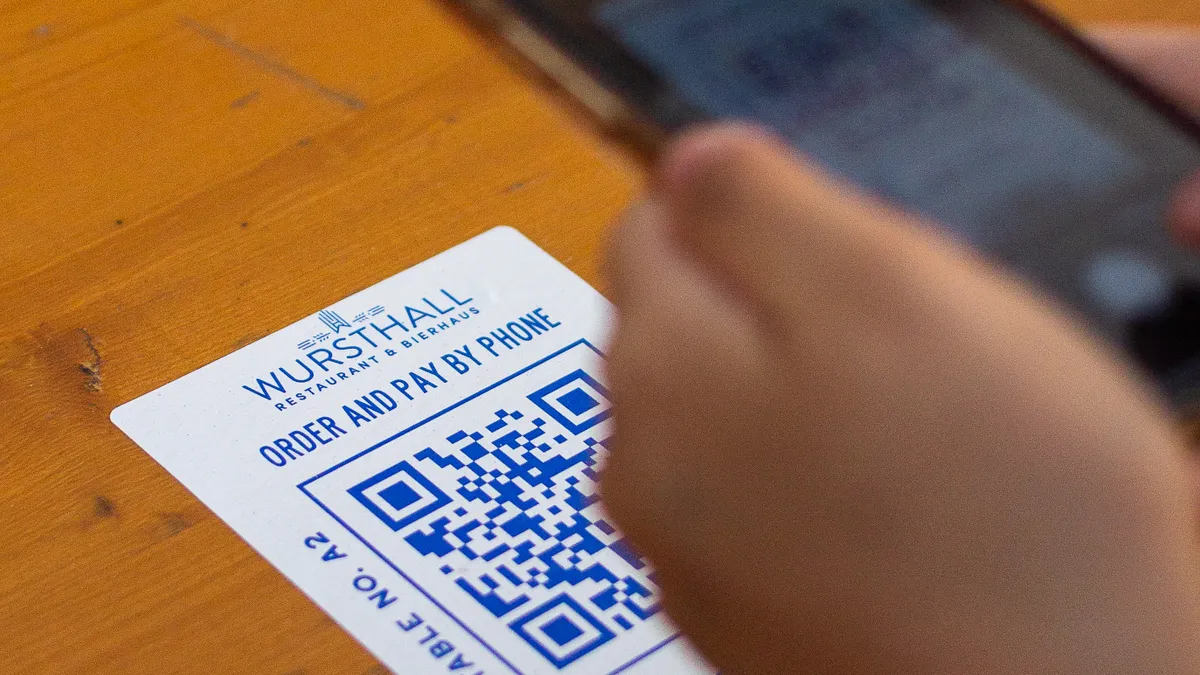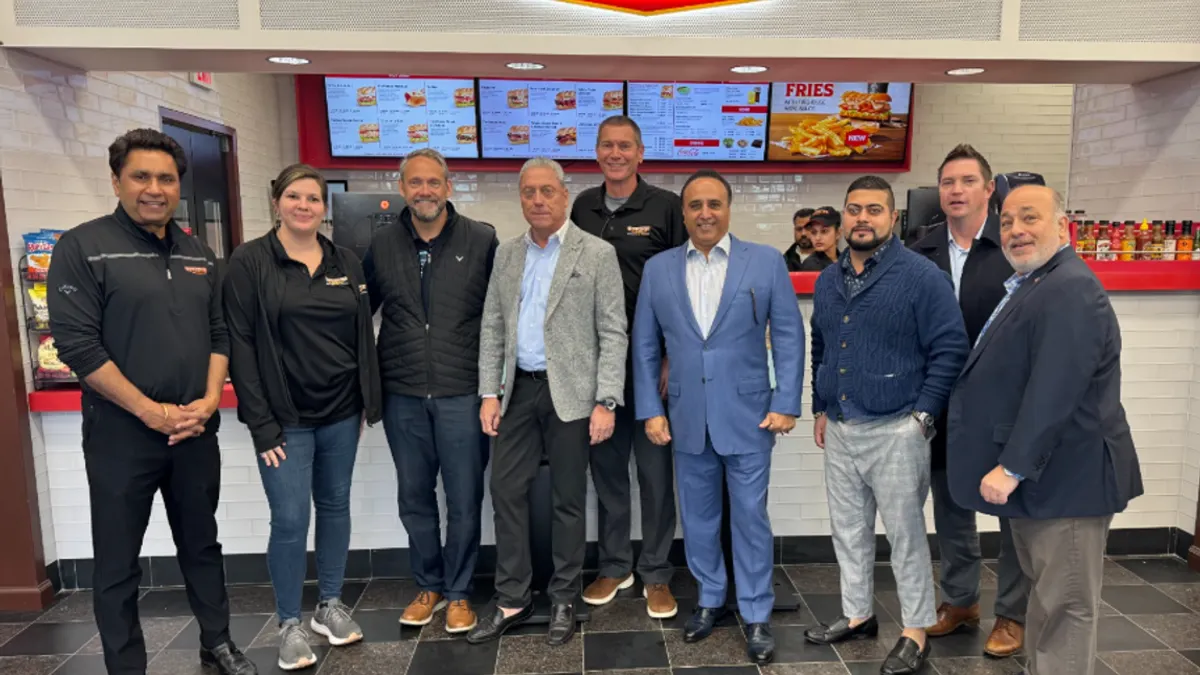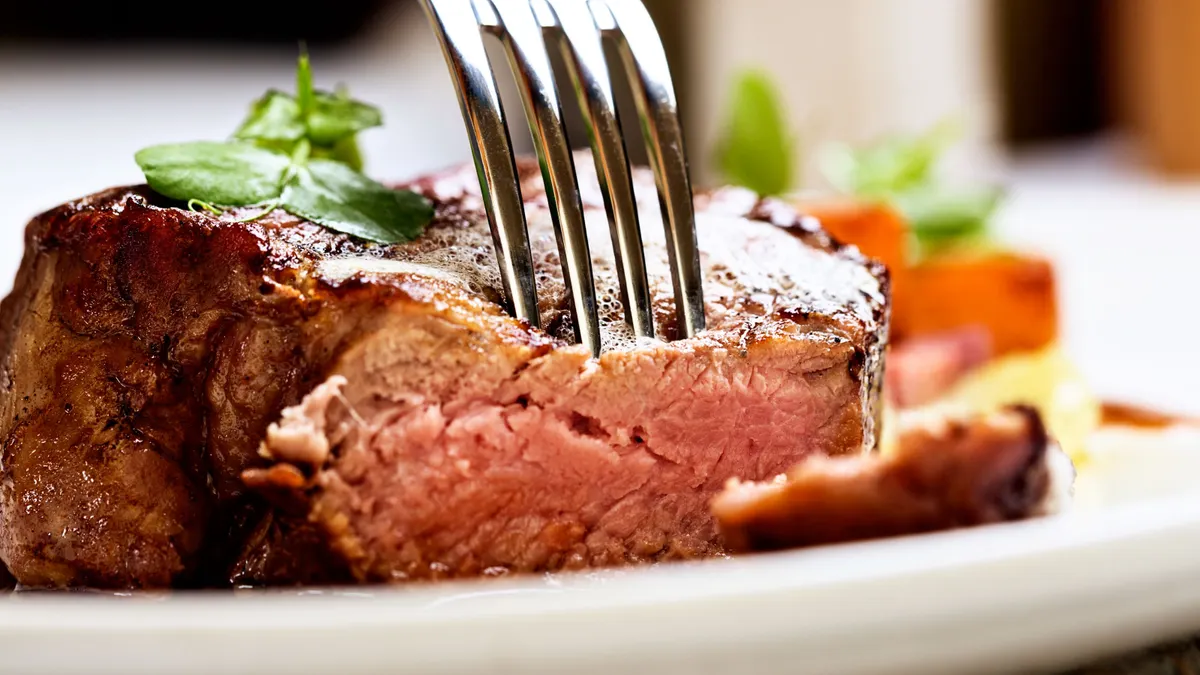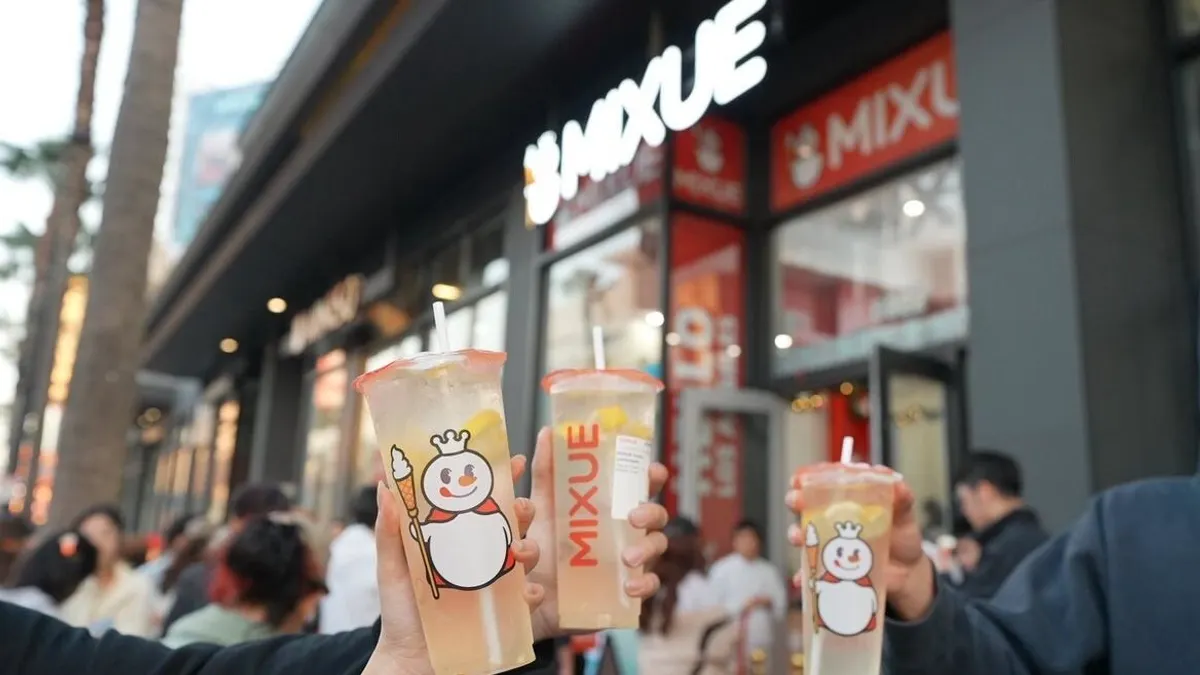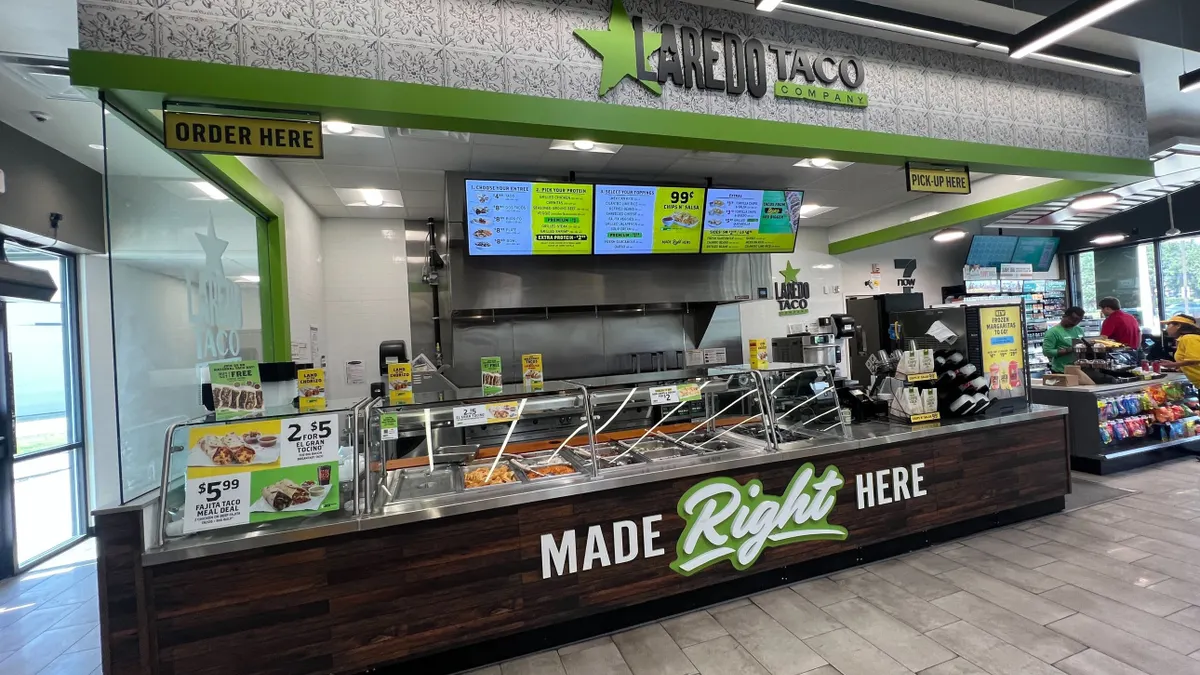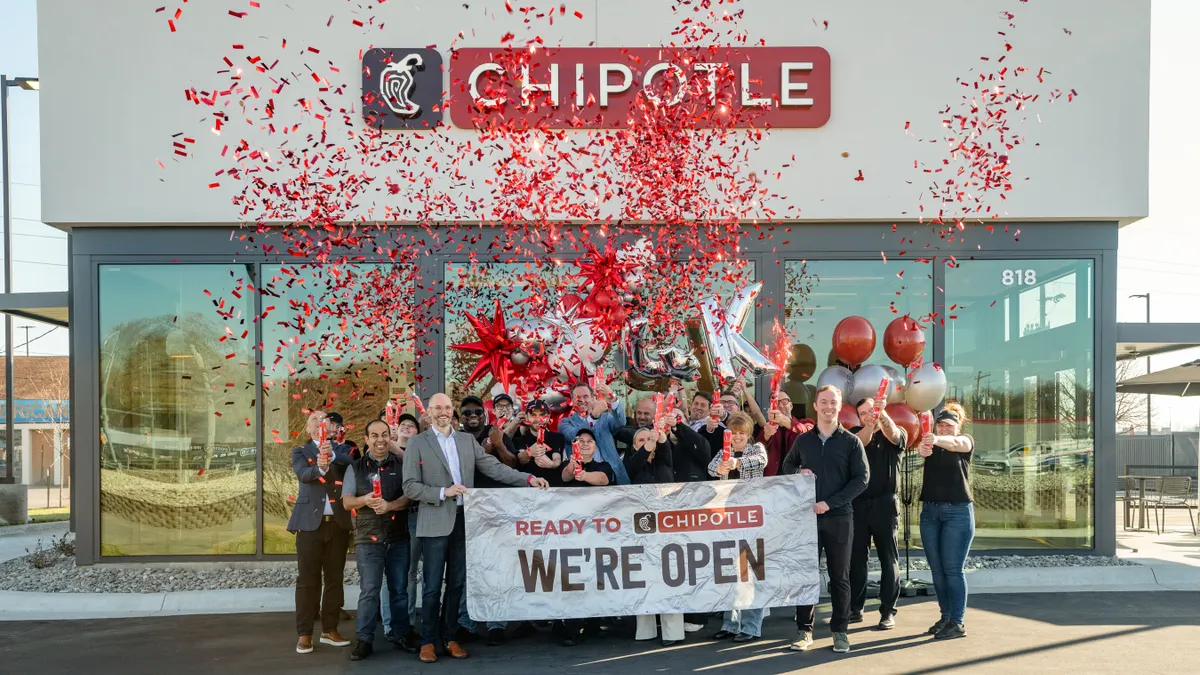This story is part of a series on the trends that will shape the industry in 2021. You can find all the articles on our trendline.
As the dust of 2020's pandemic disruption begins to settle and a permanently altered restaurant landscape comes into focus, operators are still asking a major question: What technologies will become table stakes for indoor dining?
Restaurant experts and operators agree that amid fluctuating COVID-19 spread, which in turn seesaws dining room restrictions and consumer comfort level with eating indoors, it’s difficult to predict. But it’s clear that technology will transform traditional aspects of the full-service dining room in 2021 and beyond to cater to new diner expectations for convenient, contactless experiences.
"There’s a reluctance to lose that human component [in the full-service sector] and any technology takes time to realize how you can use it properly," Carolyn Richmond, co-chair of Fox Rothschild LLP’s hospitality practice group, said.
"But I think the times and the state of the industry is going to financially necessitate that fine dining restaurants also get better at implementing technology, and that will very well be in the dining room."
Sit-down restaurants have traditionally abstained from digital innovations and other kinds of consumer-facing technology out of fear that these changes could cheapen the diner’s experience and undercut their value proposition, but David Sherwyn, law professor at Cornell University School of Hotel Administration and the director of the Cornell Center for Innovative Hospitality, Labor and Employment Relations, said these operators are already changing their approach.
"[In-store technology] reduces labor costs and you can use it as a marketing tool," Sherwyn said. "Some [restaurants] are going to use as much tech as possible to give you an excellent experience with little or no touch."
One-hundred percent of foodservice operators reported in a December Panasonic survey that the pandemic has intensified their sense of urgency to adopt transformational technology, and respondents are implementing tech that prioritizes safety and self-service in response.
"There's been a lot of technology that's surrounded off-premise, whether that be [for] order ahead for delivery, with… third-party delivery companies. But there hasn't been a lot of technology that has been broadly adopted inside the restaurant. And we think that the time for that is now," Laurent May, head of Ready, a payment and order processing commerce platform, said.
Much of the restaurant industry’s investments in in-store tech have gone toward contactless payment solutions through QR codes or tableside ordering technology to minimize customer contact with restaurant workers, but operators are also experimenting with cutting-edge air filtration and surface cleaning technologies to make diners more comfortable when sharing space with a crowd.
"There will be some restaurants that will say 'We've got the greatest air filtering system. We wipe down our tables with this… solution that kills all viruses for 90 days… and you can have an experience here without ever really interacting with the server,'" Sherwyn said. "The question is, will my kids… tell their kids about the days when servers used to come to your table and interact with you… or will keeping the air clean and the touchless stuff be more based on cost, convenience and desire and less on fear."
QR codes are proliferating, and some diners accept them as standard
Forty-percent of restaurant operators surveyed by the National Restaurant Association say they added a contactless mobile payment option since last March to minimize person-to-person contact, according to the group's 2021 State of the Restaurant Industry report.
This prioritization seems to directly reflect diner sentiment, with 21% of consumers planning to dine inside a restaurant reporting that contactless payment options would factor into their restaurant choice. This is especially true for younger consumers: 29% of Gen Z diners said contactless payment solutions would influence where they eat compared to 24% of millennials and 18% of Gen X consumers.
Restaurants can streamline these solutions and further cater to diner interest in reducing touchpoints with waitstaff and traditional, physical menus by implementing tableside ordering solutions as well, experts suggested. CardFree, for example, is a company that sets up restaurants with a combination of contactless solutions including pay-at-table QR code technology and text-to-pay technology.
"Consumers are not only expecting [this kind of technology] and wanting it to be there going forward, but the brand is also realizing 'Hey, I'm turning tables faster, tickets are already going up,'" CardFree CEO Jon Squire said. “They are realizing the convenience and saying ‘Why did I wait so long?'"
Though many low-tech restaurants are often hesitant to implement new payment technology, diners can easily adapt, Richmond said.
"[Ordering at a table is] not all that inconvenient. If you’ve ever traveled overseas outside of the U.S., credit cards are dealt with at the table with technology," Richmond said.
Many restaurants have quickly implemented this solution by adding QR codes to their tabletops. MustHaveMenus CEO Jim Williams said that his company, which helps restaurants design menus via its online design tools and printing service, rushed to offer the technology shortly after the start of the pandemic in response to surging operator demand.
"It was like a bolt of lightning. The interest in QR codes happened overnight. It was really a scramble for restaurants," Williams said.
"Consumers are not only expecting [this kind of technology] and wanting it to be there going forward, but the brand is also realizing 'Hey, I'm turning tables faster, tickets are already going up.'"

Jon Squire
Founder and CEO, CardFree
Fifty percent of full-service restaurant operators said they have added digital menu access via QR codes since March 2020, according to NRA’s 2021 State of the Industry Report. But it hasn’t become a point of differentiation in the mind of the consumer — only 1 in 5 diners said the option of accessing a restaurant’s menu through their phone or a QR code would make them more likely to choose one restaurant over another in the next few months.
Michael Jacobs, partner at New York-based, upscale restaurant chain The Smith, said the company has seen mixed success with QR code menus since rolling them across its locations last spring.
"We’ve found that a number of guests do not want to do that. We keep… paper with the menu for those that either didn’t have a smartphone, didn’t want to deal with the QR code and weren’t comfortable with it. Some people just wanted a piece of paper," Jacobs said. "While we offer it… my sense is that it is something that will not continue much beyond pandemic times. Certainly it will be available, but so many people are used to sitting down and having a physical menu in their hand."
Diners at The Smith often won’t search for menu subcategories through QR codes, either.
"Depending on the type of restaurant and the complexity of the menu, guests have questions. … There’s only so much that you can put on a menu that people will read on a small device," Jacobs said. "People were less inclined to look up drinks, cocktails and wine through the QR code, so more often than not we would drop the beverage menu with each guest [that featured] a QR code for the food menu, and if they wanted a [physical] food menu it was available upon request."
Menu QR codes are printed on small tabletop tents and are posted at the host stand at The Smith, and payment QR codes are printed on the checks dropped off at the end of the meal. Diners can then pay with their Apple device, Google Wallet or credit card.
Jacobs said that some diners have also been reticent to use QR codes to close out their dining experience. Prior to the pandemic, The Smith deployed tabletop payment devices to customers who wanted to be able to close out on their own time, and the restaurant offers these as an alternative to QR code payment.
Some consumers also simply request that waiters take their credit cards the traditional way. Jacobs said that use of QR codes, pay-at-table devices and traditional payment is an even mix between customers.
"I do sense that that technology will stick going forward because I think people have appreciated the ability to close out the check and take care of things on their own. It definitely has sped up the process," Jacobs said.
WIlliams argues that QR codes are an easy way for restaurants to become digitally integrated because they are inexpensive and easy to implement, adding that MustHaveMenus can have a restaurant client set up with QR codes for digital ordering in about three minutes.
"We've just trained a whole consumer culture to look for QR codes. And that training is a big deal," Williams said. "The reason QR codes didn’t take off in the first place is because people… just didn’t bother. But now we have to… and it’s really opening a door for restaurants."
Restaurant perspectives are evolving as well, with many operators now beginning to value digital integration above table presentation, May said.
"Evolution of both consumer adoption and merchant adoption of technology was forced by the pandemic… we heard [pre-pandemic] 'We don’t want an ugly QR code on our beautiful table, that’s part of the hospitality experience,'" May said. "Those attitudes have completely changed. The functionality of an NFC tag or a QR code on a table brings so much digital transformation opportunity that maybe the aesthetic that used to be a primary concern is now a secondary concern."
Alexander Washut, co-owner of two-unit Jake’s Restaurant in Massachusetts and MustHaveMenus customer, said that making his menu available via QR codes has saved on printing costs, and that younger consumers have been vocal about their appreciation for a contactless way to browse Jake's offerings.
Once the pandemic ends, however, Washut hopes that QR codes can supplement traditional hospitality instead of replace it.
"[QR codes] do lose that connection with our servers… that banter, that spiel at the table, that connection. So I think there’s a balance going forward, even years after. I don't think it’s going away, but I don’t think it’s going to take the center stage [like it has] for the past 10 months or so," Washut said.
Self-service ordering can increase ticket size, customer satisfaction
May sees this technology as a supplement to, not a replacement for, waitstaff at sit-down restaurants whether in the casual or fine dining segment. When given the option of ordering from a waiter or from their phone or a tablet at the table, most diners still prefer the waiter, NRA research shows. And among diners who plan to eat inside a dining room or fast food concept in the next few months, 64% say they would sit in the section that offers traditional table service.
The convenience of the technology, even as a supplement, comes with hospitality challenges.
"It's always been our thought process to create an experience for the guest, and that has a beginning when they check in, a middle as we go through service, and an end when we thank them and we say farewell," Jacobs said. "The challenge with pay-at-the-table is you come back to wish them farewell sometimes and they’re not there anymore… it does feel a little impersonal at times."
This concern about impersonality is why The Smith does not offer QR codes for ordering. After viewing the menu, guests still place their meal requests with a server.
"That’s something that, certainly fast casual or casual restaurant chains, national companies, would use… it's another opportunity for there to be as little interaction, which goes against everything in my hospitality genes," Jacobs said.
Allowing diners to order and pay at their tables without a waiter, however, could have a material impact on sales and diner satisfaction, he said, because it takes pressure off restaurant employees and diners when the dining room is very busy. This is especially valuable now, as restaurants contend with a major labor shortage.
"The challenge with pay-at-the-table is you come back to wish them farewell sometimes and they're not there anymore… it does feel a little impersonal at times."

Michael Jacobs
Partner, The Smith
"Restaurants need to become more efficient and run their operations with less labor. When you're able to match service levels with demand through self-service technology… we see customer satisfaction going up, we see average order size going up and we see labor costs going down. And that’s a pretty wicked value proposition," May said.
This can also be achieved through self-service tablets at the table, an extension of the kiosk technology that had become widely adopted by QSR chains prior to the pandemic to cut down on lines, free up employees for tasks beyond taking orders and reducing operator reliance on labor.
Order-at-the-table devices were already being deployed by casual chains prior to the pandemic as a way to streamline the ordering process for waitstaff. For example, Red Robin CEO Paul Murphy said at a recent ICR conference that the chain’s handheld ordering technology — used by its waiters, not customers — has sped up the ordering process and allowed diners to order more than before, raising guest satisfaction levels. Murphy also believes that the technology will help lift alcohol sales because increased waiter availability allows diners to order a second beer or glass of wine before their food arrives.
In a pandemic and post-pandemic environment, self-service ordering and payment technology can achieve similar results, May said.
"There was a stat we were able to generate that paying on your own device rather than waiting for a server to drop off the check actually saves 21 minutes of table time on average across our network… and that’s great for a restaurant because they have the ability to increase their revenue per hour per seat," May said.
Digital integration at the table also primes diners to become more loyal customers and gives restaurants greater customer ownership in and outside of the restaurant, May said.
"When I sit down and pay my bill, I can scan the QR code, and I can sign up for loyalty automatically, just by signing in with Apple Pay or Google Pay. I can automatically redeem my offers and my coupons from a loyalty program. And from a digital transformation transformation perspective, I'm now a user within that restaurant's ecosystem," May said. "So that means online I can be provided offers that are tailored and personalized to what I had [during] the meal at the restaurant."
Clean air could help peace of mind, give a marketing edge
While many diners are looking for front-of-house solutions to reduce their proximity to waitstaff at full-service restaurants, fear over shared breathing space with fellow patrons — even in dining rooms with reduced capacity — could remain. But in some ways, this stumbling block is easier to overcome because the solutions are rooted in back-of-house technology that doesn’t disrupt the traditional upscale dining experience, Sherwyn said.
"Especially in places that don't have an outdoor component… they're using extremely efficient and effective air filtering… [and] it’s going to become a point of advertising," Sherwyn said. "Because [it adds] safety but it doesn’t diminish my experience."
Restaurateur Ivan Kane, who owns Forty Deuce in Ohio, installed an AiroDoctor air filtration system as soon as he was allowed to reopen his dining room in May after initial COVID-19 lockdowns. The system cost about $4,000, which Kane said is well worth the peace of mind that the technology offers both his employees and his customers.
He keeps the system, which kills 99% of viruses including the coronavirus, in the main dining area, and says it isn’t disruptive.
"I'm trying to do everything in my power beyond government mandate to keep customers safe and keep employees safe… it gives a sense of security to the customers knowing we have this technology," he said. "You can’t leave any stone unturned because this is an unprecedented situation with revenue dropping drastically, so you’ve got to do everything humanly possible to drive business."
Kane added that he believes his marketing around the filtration technology has attracted more customers.
"I'm trying to do everything in my power beyond government mandate to keep customers safe and keep employees safe… it gives a sense of security to the customers knowing we have this technology."

Ivan Kane
Owner, Forty Deuce
Kane also uses hospital-grade, ultraviolet, germicidal lamps to clean surfaces within his restaurant. The lamps are so powerful that if someone were to look at them directly the light would burn their corneas, so the lamps are only used after hours and are set on a timer. He has 15 lamps spread throughout Forty Deuce to ensure every part of the restaurant is fully cleaned after each day.
Some experts believe that air technology within restaurants could eventually become featured design elements as well. In a recent interview, designers at restaurant design-focused Blueplate Studio at Wilson Associates said they envisioned a futuristic dining concept that uses motors to force strong air currents from floor to ceiling that could create a wall of air pressure between tables to prevent airborne particles from floating between parties.
These kinds of technologies could help increase diner confidence so restaurants can take full advantage of strong pent-up demand for indoor dining experiences. According to NRA data, 85% of adults believe going out to a restaurant with family or friends is a better use for down time than cooking at home, and 67% of consumers surveyed between Dec. 4-6 reported they aren’t using restaurants as much as they’d like.
"I just think at this point… we as guests don’t know where our heads are or where they’ll be, and the restaurateurs are doing their best to anticipate what the demand is going to be," Sherwyn said. "Consumer adoption and merchant adoption [of technology] really came together through a crisis… A new standard has been set. And everyone is going to expect some level of technology in the restaurant moving forward."


